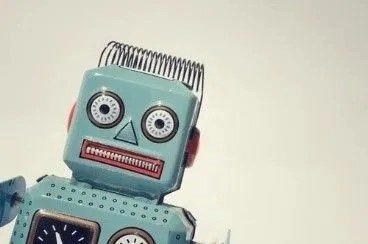
- Your digital phone and any late-model car
- Your newsfeed & email spam filter
- GPS navigation that gets you around a new city
- Virtual Assistants in our hands and our homes
- That smart home thermostat you splurged on
- Your personalized recommendations from Amazon & Netflix

- Robots are not AI… stop thinking of robots. A robot is a container for AI (sometimes mimicking the human form, sometimes not) but the AI itself is the computer inside the robot.
- AI is not one “thing”. It is an evolving set of technologies that use some form of analytics as its base.
- The lowest caliber of AI is called “Artificial Narrow Intelligence” (ANI). ANI is AI that is able to handle just one particular task. For example, there’s AI that can beat the world chess champion in chess – but that’s the only thing it does. That’s why narrow AI is also called “weak AI”. Incredibly, Siri, Alexa and even Watson, IBM’s supercomputer that can beat humans at Jeopardy! are examples of narrow AI.As of now, we have conquered the lowest caliber of AI—ANI— in many ways, and it’s everywhere.
- The next level of AI is “Artificial General Intelligence” (AGI). AGI is considered “strong AI” – and sometimes called human-level. General/strong AI is much harder to achieve than narrow/weak AI. It has a very general mental capability that, among other things, involves the ability to reason, plan, solve problems, think abstractly, comprehend complex ideas, learn quickly, and learn from experience. My friend C-3PO – a droid programmed for etiquette and protocol – is a good example of strong AI. It’s probably no surprise that we’re still trying to achieve this caliber of AI.
- “Superintelligence” is the highest caliber of AI. It ranges from a computer that’s just a little smarter than a human to one that’s trillions of times smarter in all topics. We have yet to master this level of cognitive intelligence, which blends multiple types of AI techniques, including Machine Learning, Neural Networks and Deep Learning. For example, this would be like HAL 9000 from Space Odyssey – the supercomputer who speaks in a soft, calm voice and a conversational manner and is capable of speech, speech recognition, facial recognition, natural language processing, lip reading, art appreciation, interpreting emotional behaviors, automated reasoning, spacecraft piloting – and playing chess.
- AI-powered Chatbots and Self-Service: Due to advancements in machine learning, natural language processing and speech recognition, the cost of developing chatbots has come down drastically, which, along with consumer acceptance, is fueling the explosive growth of this market. Chatbots scale quite easily and can handle hundreds of conversations at a time. This makes them the perfect candidates for tasks with a predictable and well-defined conversation flow. Machine Learning and NLP power AI chatbots and Virtual Assistants that can greet and authenticate customers and offer a variety of self-service options – from simple password reset to more complex things like account and order management.
- Conversational IVR: Modern natural language IVR systems use Automatic Speech Recognition (ASR) software to make voice self-service more conversational.
- Forecasting: Machine Learning algorithms generate workforce forecasting and scheduling that eliminate guesswork, simplify complex scenarios – and improve in accuracy with each iteration.
- Analytics: AI-powered analytics software for contact centers combines Natural Language Understanding and Machine Learning to determine sentiment, context and meaning when analyzing voice and text interactions.
- Take this short interactive Forrester AI Readiness Assessment to find out now. (It only takes a few minutes to get your own customized recommendations with insights on your organization’s readiness to adopt AI technologies and available next steps.)
- Join the conversation by registering for our upcoming webinar, “The AI-enabled Contact Center”, where we’ll explore the ROI of incorporating artificial intelligence to streamline operations, enhance experience and reduce costs. Register now!
The AI Enabled Contact Center
Thursday, December 5, 2019 – 1:00 PM ET




